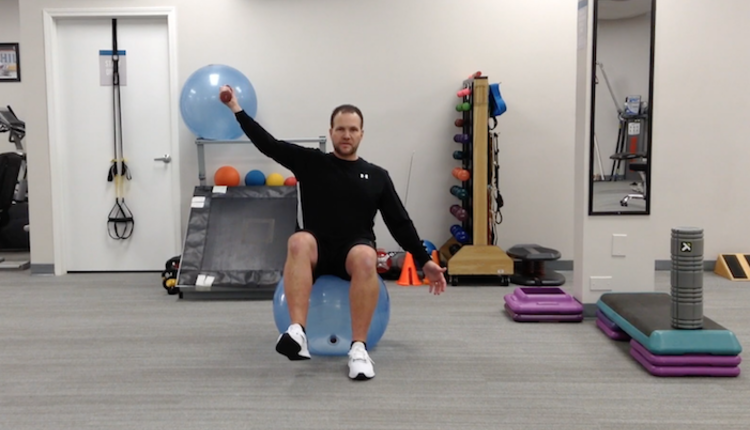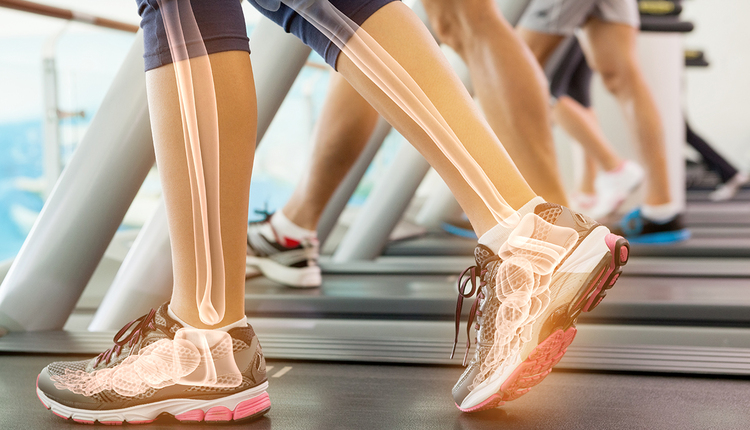
Execution: Begin in a tall plank position with a medicine ball beneath the left hand. Perform a push-up and return to tall plank position. Next, roll the medicine ball over and beneath the right hand. Perform a push-up and return to the tall plank position again. Repeat this sequence alternating push-ups with ball beneath the left and right hands.
Continue this cycle of alternate arm medicine ball push-ups for time or a designated number of repetitions. Be sure to engage the abdominal muscles to maintain a neutral spine and work to minimize excessive torso rotation/hip lift during the exercise. A slower cadence is preferred to ensure proper form.
Regression: Perform the exercise on the knees. This is often a great place to begin for the client with limited upper body strength or poor stability. This may also be helpful if the client complains of wrist pain or feeling weak/unstable in the tall plank position. When performing this exercise on the knees, it can then be advanced by moving the start position of the ball and hands further away from the head to increase the lever arm/difficulty.
Progressions:
1. Increase the cadence of the exercise
2. Move the feet closer together (reduces base of support)
Application: This exercise will promote upper body and core strength/stability as well as enhance shoulder stability. The medicine ball promotes some asymmetry which forces the client to focus on neuromuscular control.
Additional notes: This exercise may be contraindicated if there is a history of shoulder instability or active shoulder pathology. It must closely monitored to avoid poor form and compensatory motions.
















